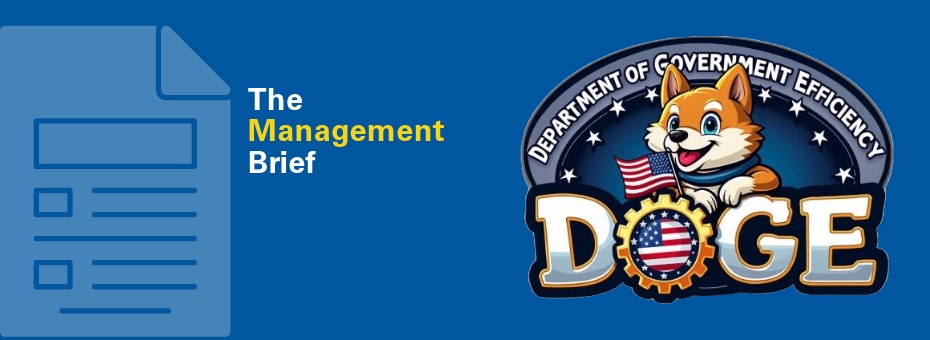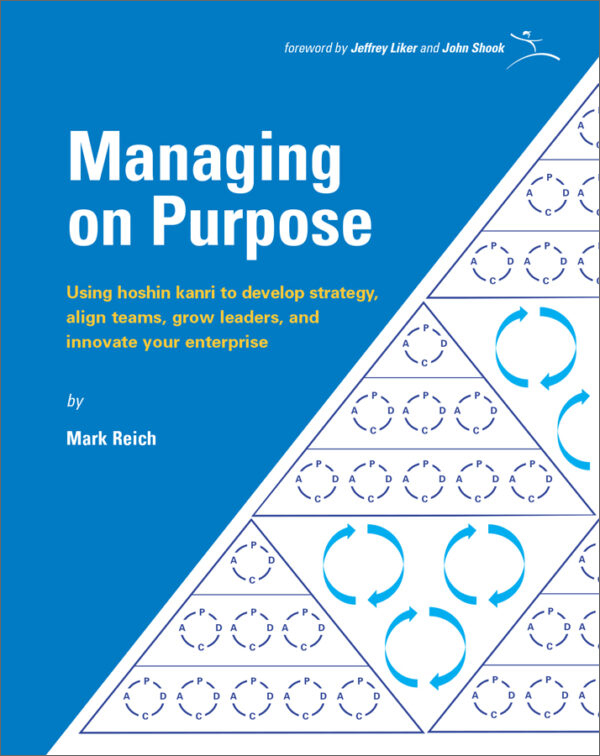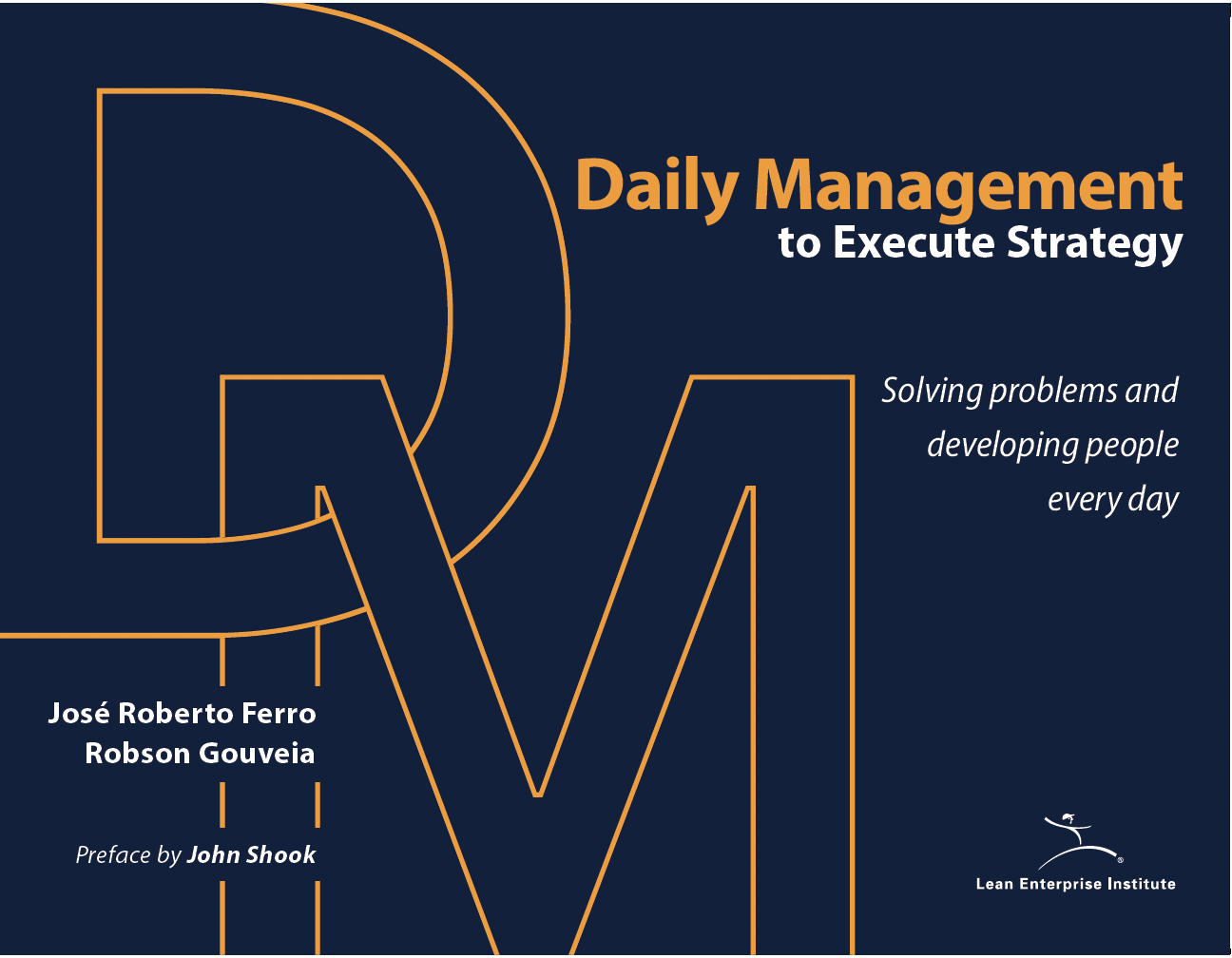The Management Brief is a weekly newsletter from the Lean Enterprise Institute that bridges the gap between theory and practice in lean management. Designed for leaders focused on long-term success, it delivers actionable insights, expert perspectives, and stories from real-world practitioners. Each edition explores the principles of lean management—strategy deployment (hoshin kanri), operational stability and continuous improvement (daily management), and problem-solving (A3)—while highlighting the critical role of leadership. Subscribe to join a growing community of leaders dedicated to creating organizations built for sustained excellence.
On November 20, Elon Musk and Vivek Ramaswamy, leaders of the planned Department of Government Efficiency (DOGE), revealed their intentions in a Wall Street Journal opinion piece. For the sake of this article, I will assume that the authors are sincere and that there is not, as some allege, a hidden agenda.
The ambition is to slash as much as $2 trillion from the US government’s annual $6.75 trillion spend by July 26, 2026. This is attainable, the authors claim, because the U.S. government is so overburdened with unnecessary regulations that a drastic reduction in them “provides sound industrial logic for mass head-count reductions across the federal bureaucracy.”
To achieve this, DOGE will work with “embedded appointees” to identify “the minimum number of employees required at an agency for it to perform its constitutionally permissible and statutorily mandated functions.” In other words, DOGE will strive to make as many head-count reductions as the law will allow.
Some targets will be no-brainers. According to the U.S. Government Accountability Office (GAO), between $233 billion to $521 billion is annually lost to fraud. And of the $750 billion that the federal government spends annually on contracts, $150 billion is stolen by bid rigging alone, according to an OECD (Organisation for Economic Co-operation and Development) report.
On the other hand, a sizable portion of the budget is tied up in fixed obligations such as Social Security and Medicare. The government also spends nearly a $1 trillion annually servicing the national debt.
What remains is not just a regulatory police force, but a vast and complex network of services that U.S. citizens depend on for disaster relief, law and order, national defense, safe food and drugs, efficient highways, clean air and water, public health, social and medical assistance, orderly international trade, and safe and secure air travel.
While government bureaucracy is undeniably rife with inefficiencies, compromising the quality of these services could harm millions of Americans and also cause costs to rise. For example, public health was arguably under-resourced in 2020 given America’s flatfooted response to COVID-19. The pandemic has killed over a million people in the U.S. and, as of Jan. 2023, cost the federal government $4.6 trillion.
Accordingly, instead of asking “What cuts are permissible under law?” Messrs. Musk and Ramaswamy would do well to ask, “How can we deliver the services that citizens depend on more efficiently while maintaining or improving their quality?”
Transforming government with this mindset would be a monumental task, but DOGE could draw inspiration from the accomplishments of thousands of lean organizations in the public and private sectors. Many of these have reduced their waste by half or more while showing that when processes are optimized towards a clear purpose, both quality and efficiency improve together. This is, we have seen over the past 50 years, the only sustainable way to truly make organizations more efficient at delivering the products and services they provide.
The mission, however, cannot be achieved by top-down cost cutting, but requires the active participation of the people who understand the processes behind the services being delivered. There are two reasons for this.
First of all, contrary to the way financial reports are structured, organizations don’t behave like collections of independent assets, but as complex systems comprised of interdependent and interactive components.
Accordingly, improving the efficiency of department “A” doesn’t necessarily flow to the bottom line – depending on how departments interact, the change could harm its interactions with department “B” and department “C”, causing the overall efficiency of the three departments to decline. This holds true at all levels of an organization, including major divisions, functional departments, work groups, and individuals.
This concept was recently demonstrated when Results Washington, which promotes lean practices within the state, was called upon to help solve an inordinately high recidivism rate, that is, too many individuals were re-offending shortly after being released from prison.
Typically, a single agency, such as Corrections, would handle this on its own. In this case, the problem-solving team also included representatives from Washington State Patrol, Health, Social and Health Services, Employment Security, and Licensing.
The process revealed a root cause that nobody could have expected – upon release, individuals faced a long wait to get their driver’s license. Unable to drive, they couldn’t find work or acquire housing, stymying their efforts to re-enter society. Correcting that delay broke the vicious cycle and reduced the recidivism rate. This never could have been solved by a single agency.
This sounds minor, but recidivism costs governments in the U.S. $8 billion annually, and could be the tip of another iceberg. The United States imprisons more people per capita than any other country in the world – in 2021, there were over 2 million people in state and federal prisons, costing governments $108 billion annually, not including other crime-related costs such as policing and courts. Investigating and then reducing these high numbers would be a worthy and long overdue project, but it would require the collaboration of multiple agencies.
The second reason top-down cost cutting won’t work is that waste doesn’t show up as line items in financial reports but is distributed in tiny increments throughout the organization’s processes. Most of these don’t manifest directly as costs, but as problems such as defects, redundant process steps, unnecessary transport, excessive wait times, poorly orchestrated handoffs, inadequate equipment, or inaccurate information. Typically, these are only visible to people who work in these processes every day.
Eradicating waste on a significant scale, therefore, requires that organizations transform their entire workforces into armies of problem solvers. To do this, leaders must earn the trust of the workforce and convey enormous clarity about the value of the work and what constitutes waste. This sets the stage for building collaborative team cultures in which employees at all levels are trained and empowered to initiate improvements in their work processes. The astounding efficiency of organizations like Toyota is built on thousands upon thousands of such incremental improvements.
Many would say a transformation like this is impossible in an organization that employs over 3 million people. Such an effort, however, would not be unprecedented. During World War II, the U.S. government worked with the private sector to repurpose some 6,000 factories to produce armaments to support the war effort. The project, Training Within Industry (TWI), transitioned managers into a training-coaching role and deployed a train-the-trainer approach to train 1.65 million workers, many of them unskilled, in continuous improvement methods. The effort was so successful that TWI became one of the mainstays of Japan’s stunning post-war turnaround and prompted management guru Peter Drucker to suggest that it was time to re-think how companies are managed.
There’s an opportunity here to not only transform the U.S. government for the benefit of all stakeholders but to trigger public-private partnerships for tackling some of America’s most pressing problems. One could be to re-vitalize the industrial base and make it more competitive globally.
Another might be to take on the appalling waste in America’s healthcare system. The U.S. is now spending approximately $5 trillion annually on healthcare – double the per capita spend of its peers, but with the worst outcomes of any developed country. Attacking the waste in this arcane system, estimated at between 25 to 45 percent, is a worthy cause that’s been neglected for far too long.
It would require enormous discipline and years of sustained effort to get the inefficiencies in the U.S. government under control, but the benefits would be substantial and widely shared. As Messrs. Musk and Ramaswamy have noted, this is an historic opportunity. Let’s hope that they heed the lessons learned over the last 50 years, and that the opportunity doesn’t go to waste.
Jacob Stoller explores this topic in depth in his latest book, Productivity Reimagined, which features insights from more than 60 business leaders.
Learn more here: https://tinyurl.com/38fmj6r8




Hopefully they are successful in this! Significant governmental wase reduction would be beneficial, but we do not want to harm the the functions that we rely on.
Brilliant summary of how to do it right, and why it’s important.
Has anyone read the actual EO establishing DOGE? While, unobjectionable, the scope appears limited to process and direct top down cost cutting is perhaps precluded.
Section 1. Purpose. This Executive Order establishes the Department of Government Efficiency to implement the President’s DOGE Agenda, by modernizing Federal technology and software to maximize governmental efficiency and productivity.
Hi Jacob,
It seems DOGE is already working very hard on efficiency. Instead of two concertmasters, as of 4:25 PM CST, January 20, 2025 AP news update, one of the concertmasters is no longer part of the commission.
The article ‘’Managing for Business Effectiveness’’ by Vienna-Döbling-born Peter Ferdinand Drucker points out to a fundamental confusion between EFFECTIVENESS-doing the right things; and efficiency-doing things right.
Good luck! DOGE will focus on the later. We are approaching 100 years from the start of a change in the vision of the world and organizations still insist on the mechanistic view of the world left by Newton and Descartes.
Managers face more panaceas than problems. Leading for business effectiveness should focus on doing the right things in coherence with the whole.
Kudos for writing this column on a subject that has caught my eye also! Because I am Industrial Engineer who is violently opposed to the use of shallow metrics like EFFICIENCY or PRODUCTIVITY to assess whether a person, machine, cell/line, team, production system — ANY work system for that matter — is performing to expectations or is failing. What scares me about the DOGE is, above all else, that one person “remotely qualifies” as an IE and the other person who is not an IE by any stretch of anybody’s imagination, being given carte blanche authority to wreak havoc on government offices and programs! I know that government and politics are cesspools of (1) bribery and corruption and (2) inefficiency and (3) long lead times — but is the DOGE going to be just a cover-up to unleash anti-woke,anti-DEI, anti-democrat, anti-justice, anti-immigrant, anti-whoever does not curtsy to Trump+Musk. INSTEAD, if they would take all the government pork that supports politicians, DoD contracts and other federal waste and INVEST it in programs that MAMGA —- Make American Manufacturing Great Again —- now that would make re-shoring a whopping success!
=== I would live to expand on this article if you will allow me to send you my LinkedIn posts ===